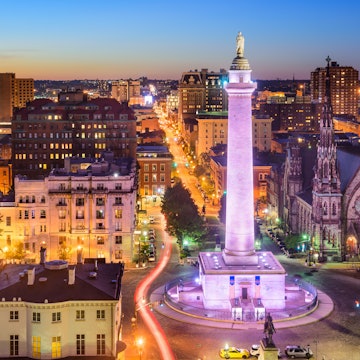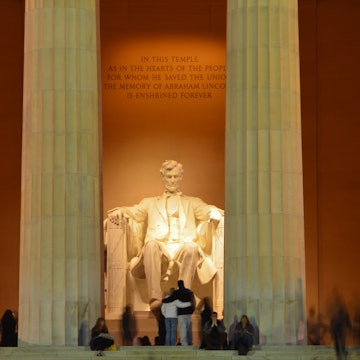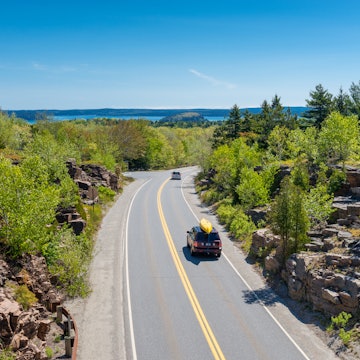

Historic houses lining the C&O canal in Georgetown, Washington, DC. Getty Images
Packed with some of the most famous and iconic historical sites in the USA – including the White House, the Library of Congress and the Lincoln Memorial – it's no wonder that visitors from across the world flock to Washington, DC.
But DC has a wealth of top things to do for everyone, not just fans of US history – its 21 Smithsonian museums and galleries provide remarkable cultural insights, from Asian art to American politics. There are also some incredible but lesser-known institutions, such as downtown's National Bonsai & Penjing Museum, which has one of the world's largest collections of bonsai trees.
You'll never go hungry here, either, whether you're a fan of food halls such as the brilliant Western Market Food Hall (visit first thing in the morning to enjoy the oven-fresh pastries at Bullfrog Bagels) in the Foggy Bottom neighborhood, or have a weakness for fine dining (Capitol Hill is your best bet for that).
Covering all these attractions in just one or two days can be tough. While you may be able to hit the major monuments and landmarks in a short trip, there is so much more to do in this historic city. Why not extend your stay and see all the wonderful things Washington, DC, has to offer.
1. Wander the streets of historic Georgetown
Georgetown is the neighborhood where Washington, DC, began. It dates back to 1751; 40 years before America's capital city was founded.
In 1828, George Washington ordered the construction of the Chesapeake and Ohio Canal, which connected the city to the rest of America. Today, this waterway is known as the Chesapeake and Ohio Canal National Historical Park, where you can walk along the waterfront lined with brick buildings dating back to the 1700s.
Georgetown's other architectural gems include Tudor Place, built in 1816 by Martha Washington's granddaughter Martha Custis Peter, and DC's oldest structure, the Old Stone House, which was built as a private home in 1766. Both are open to the public.
Detour: In June 2023, a $20 million reconstruction of the towpath that shadows the Chesapeake and Ohio Canal was completed. The canal starts in Georgetown, so why not spend a few hours wandering along its banks? If you've got an entire day to spare, consider hiking or cycling the 14-mile stretch that connects Georgetown with Great Falls, Maryland.

2. Explore the National Mall on foot
Yes, this is one of the most popular Washington DC attractions, but it's also breathtakingly beautiful. The best way to explore the awe-inspiring National Mall is on foot, wandering along its 34 miles of trails. Its 65 monuments include the WWII Memorial, the Washington Monument (once the world's tallest freestanding structure) and the Lincoln Memorial.
Make sure you visit some of the lesser-known monuments, too. Check out the beautiful German-American Friendship Garden, surrounded by fragrant lavender hedges, or the Lockkeeper's House near the corner of Constitution Ave and 17th St, which is the oldest building on the Mall.
Local tip: You'll need to pace yourself, so consider visiting first thing in the morning or in the late afternoon when crowds have thinned out, and aim for one monument an hour maximum.
3. Peek inside the White House
If you want to tour the White House, you'll need to submit an application to do so at least 21 days before your visit. If you're a US citizen, applications must be made through your member of Congress, while international visitors should contact their country's embassy in the city. The free 45-minute tours include access to several rooms, including the East Wing's Red Room (named after the ruby-red satin fabric covering its walls), the State Dining Room and the China Room, used to display the White House's china collection.
Don't panic if you can't bag a spot on a tour, though. Another option is to head to Lafayette Sq, on the White House's north side, to admire both the North Lawn in all its glory.
Planning tip: Arrive early for your tour and be prepared for lengthy queues during busier times. Check the weather forecast beforehand and dress appropriately in the event that you end up waiting for a while at the first security gate, which is outside. Visit the restroom beforehand – you won't have access to any once inside the White House.
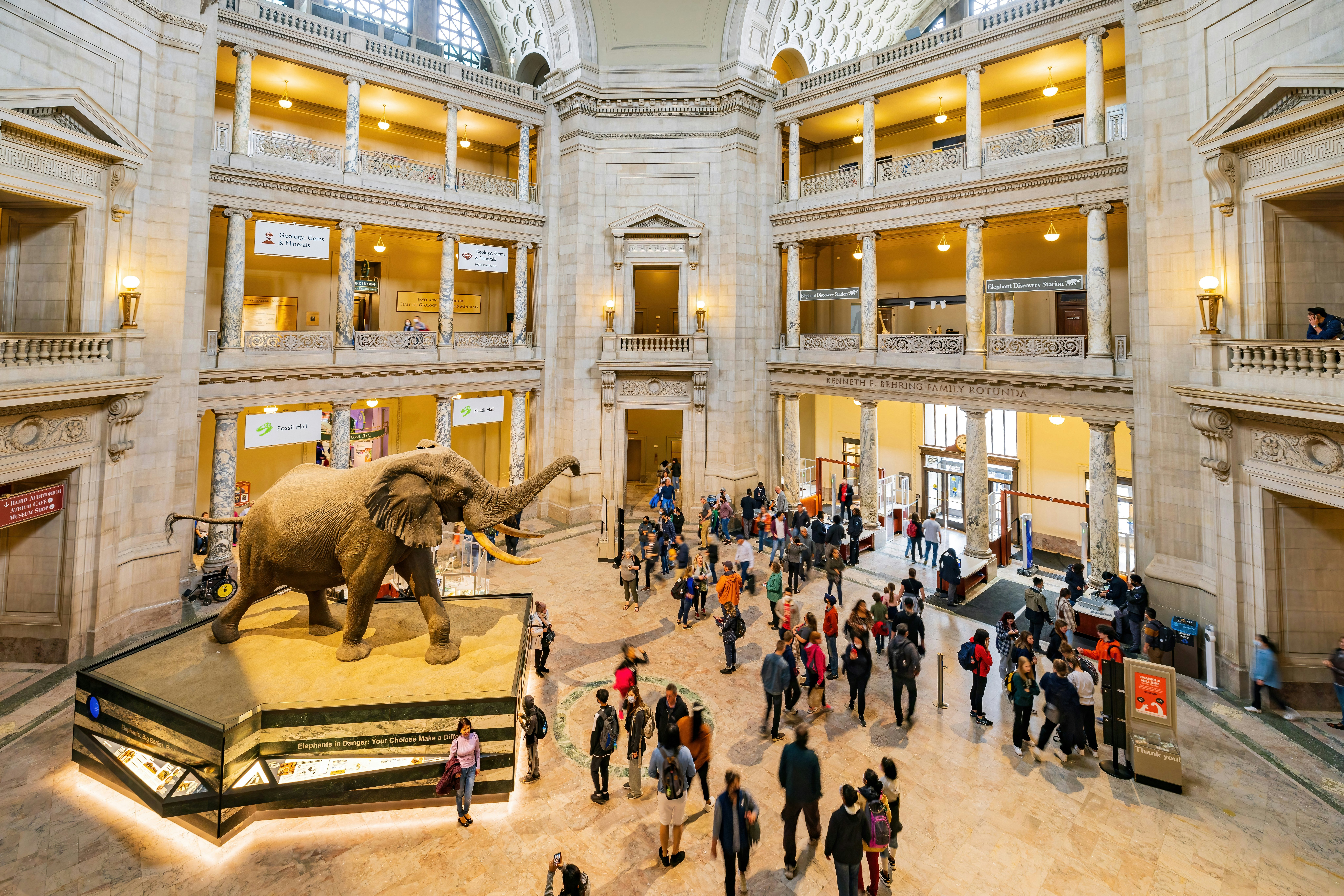
4. Tour some of the Smithsonian Institution's museums
A word of warning: there are 21 Smithsonian museums in Washington, DC, so you'll need to do some prioritizing. Don't miss big hitters such as the National Museum of Natural History, which has halls dedicated to everything from gems to dinosaurs (items in its collection include a chunk of mammoth flesh and a lump of whale earwax) or the National Museum of American History. This museum's exhibits are incredibly diverse – where else can you see the original star-spangled banner moments after checking out the ruby slippers Judy Garland wore in the 1939 movie The Wizard of Oz?
Lesser-known museums include the Hirshhorn Museum, famous for its supersized art installations, and the National Museum of Asian Art, which houses 45,000 artifacts dating back to Neolithic times. The majority of the Smithsonian's museums are located close to the National Mall, and all are free to visit.
Local tip: Almost all Smithsonian Museums on the National Mall have two main entrances – one facing the National Mall and another facing either Independence or Constitution Avenues (depending on the museum's exact location). Tour buses almost always unload their passengers outside the (much busier) National Mall entrances, so avoid the crowds by using the alternative entrances if possible.
5. Check out world-class street art
In recent years, DC has become a hotspot for some of the world's best street artists. Georgetown's masterpieces include O St NW's Wave Mural, painted by John McConnell and inspired by the famous wave painting by Japanese artist Hokusai, and Wisconsin Avenue's Alma Indigena. This colorful mural by Victor Quinonez depicts a Wixárika Elder from the Mexican state of Jalisco.
In NoMa, you'll find Madsteez's modern take on a George Washington portrait on N St, just a few feet from Union Market, whose exterior has been daubed with spectacular murals. Favorites include Mr Brainwash's supersized "Never Give Up" quote. Other great neighborhoods for street art include Mt Vernon (head to the corner of 5th and K Sts NW to see portraits of Black leaders such as Martin Luther King Jr) and U St, where Ben's Chili Bowl restaurant isn't just a great place to refuel, it's also a canvas for Aniekan Udofia's murals of African American icons, such as abolitionist Harriet Tubman.
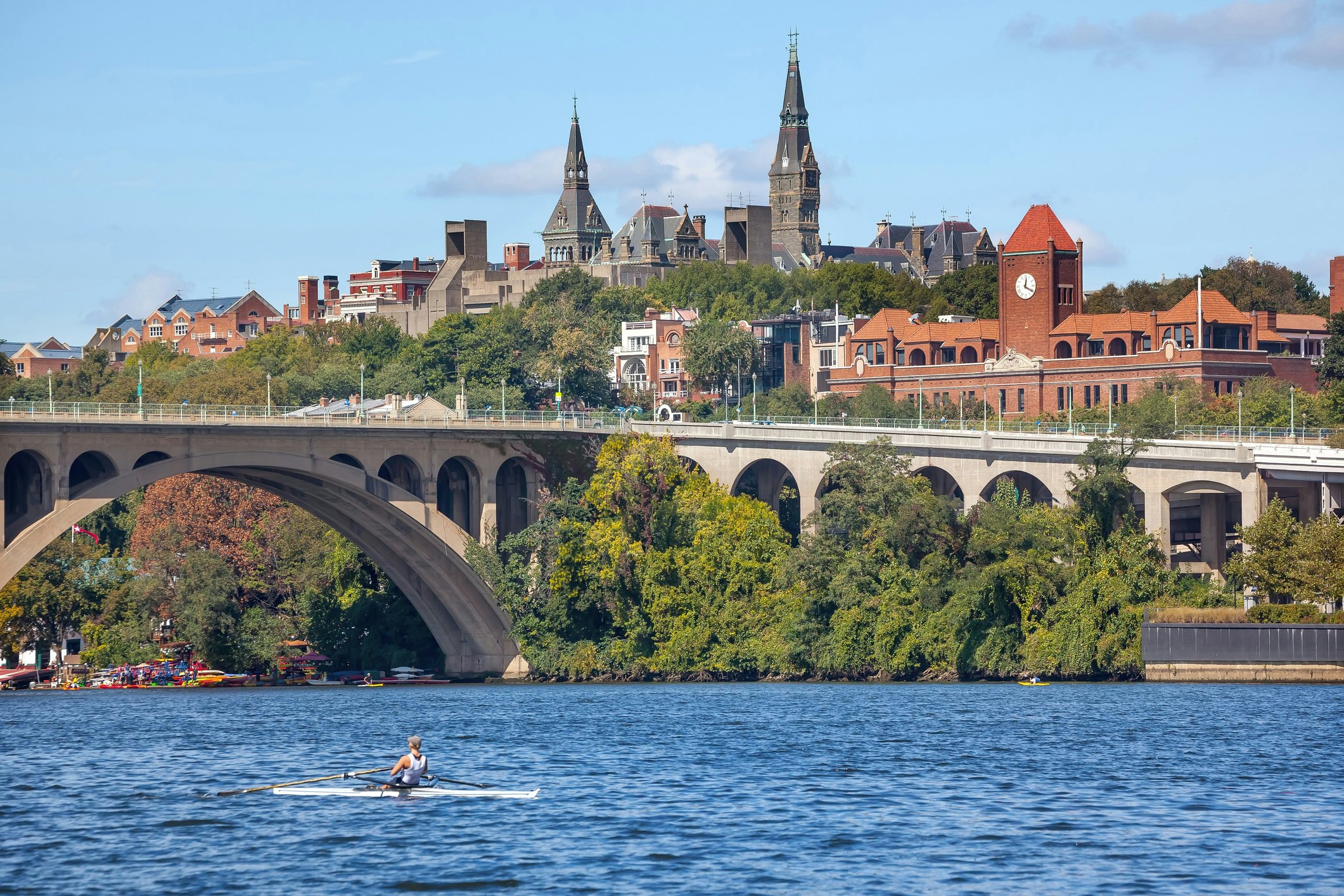
6. See the city from the water
Explore DC from the water to gain an entirely new perspective on this beautiful city. Head to Georgetown's Key Bridge Boathouse to rent a kayak or SUP before paddling over to nearby Theodore Roosevelt Island (an 88-acre forested island and national memorial).
Or opt for some old-school fun and float across the Tidal Basin – a reservoir between the Potomac River and the Washington Channel – in a pedal boat. You'll enjoy breathtaking views of the National Mall and the Lincoln Memorial. The Tidal Basin also happens to be the best spot for viewing the city’s cherry blossoms in March and April.
Alternatively, sit back and relax on a boat tour. One of the biggest operators is City Cruises, based in the Wharf area.
Local tip: If you’re visiting Washington, DC, with kids but they don’t have much rowing experience, head to the Thompson Boat Center on the Capitol Riverfront, a large watersports center that offers rowing lessons and boat hire.
7. Have a drink at a DC speakeasy
DC experienced prohibition slightly differently from other places. In 1920, the city's hard-drinking members of Congress weren't willing to give up their liquor without a fight, and they didn't have to. Instead, they simply headed to the city's embassies, which were technically foreign soil. This meant they were the only places in America where alcohol could be served legally. Booze continued to flood into the city – its position on the coastline meant liquor could easily be smuggled in from places such as the Caribbean – and almost every neighborhood had several speakeasies.
Today, numerous speakeasy-themed bars honor that tradition, including Left Door, disguised as a laundrette, the Eaton Hotel's Allegory bar, accessed via a door hidden amongst the library's bookshelves, and Chicken + Whisky. To access this whiskey-focused bar, enter the restaurant and simply walk through the freezer door next to the open kitchen.

8. Visit a historic house museum
While DC has no shortage of vast exhibits to explore in its Smithsonian institutions, for a more intimate museum experience consider one of the city’s many historic house museums.
Located in Georgetown, Dumbarton Oaks is a must for fans of Byzantine and pre–Columbian art. The historic mansion features 27 acres of lush gardens.
In northwest DC, you’ll find Russian and French art in the luxurious rooms of the Hillwood Estate, once owned by cereal heiress Marjorie Merriweather Post. If you're just spending a short weekend in DC, these smaller venues are great for immersing yourself in history while avoiding the lines found at major sites.
Planning tip: These small, private museums usually charge an entry fee; check prices and guided tour times before visiting.

9. Book a free tour of the US Capitol
While booking a tour of the White House requires some planning, anyone can walk in for a free tour of the US Capitol Building or make a reservation online to guarantee a spot. While lines can get pretty long, they’ll move quickly, with tours leaving every 10 minutes. Professional tour guides will bring you through the Crypt, the Rotunda and National Statuary Hall, answering questions as you explore.
Planning tip: You can’t bring food or drink into the Capitol Building, which includes water, so make sure you hydrate before your tour.

10. Catch a live performance
From opera and musical theater to Shakespearean dramas, you can find world-class performances of all genres at The Kennedy Center. The vast performing arts venue holds seven theaters, hosting more than 2000 events each year.
If you'd prefer a more intimate setting without a dress code, the 9:30 Club has to be one of the coolest spots in the city. A staple in the DC music scene since 1980, the club has hosted legends like Nirvana, Red Hot Chili Peppers, Public Enemy and more, and is a hotbed of up-and-coming talent.











